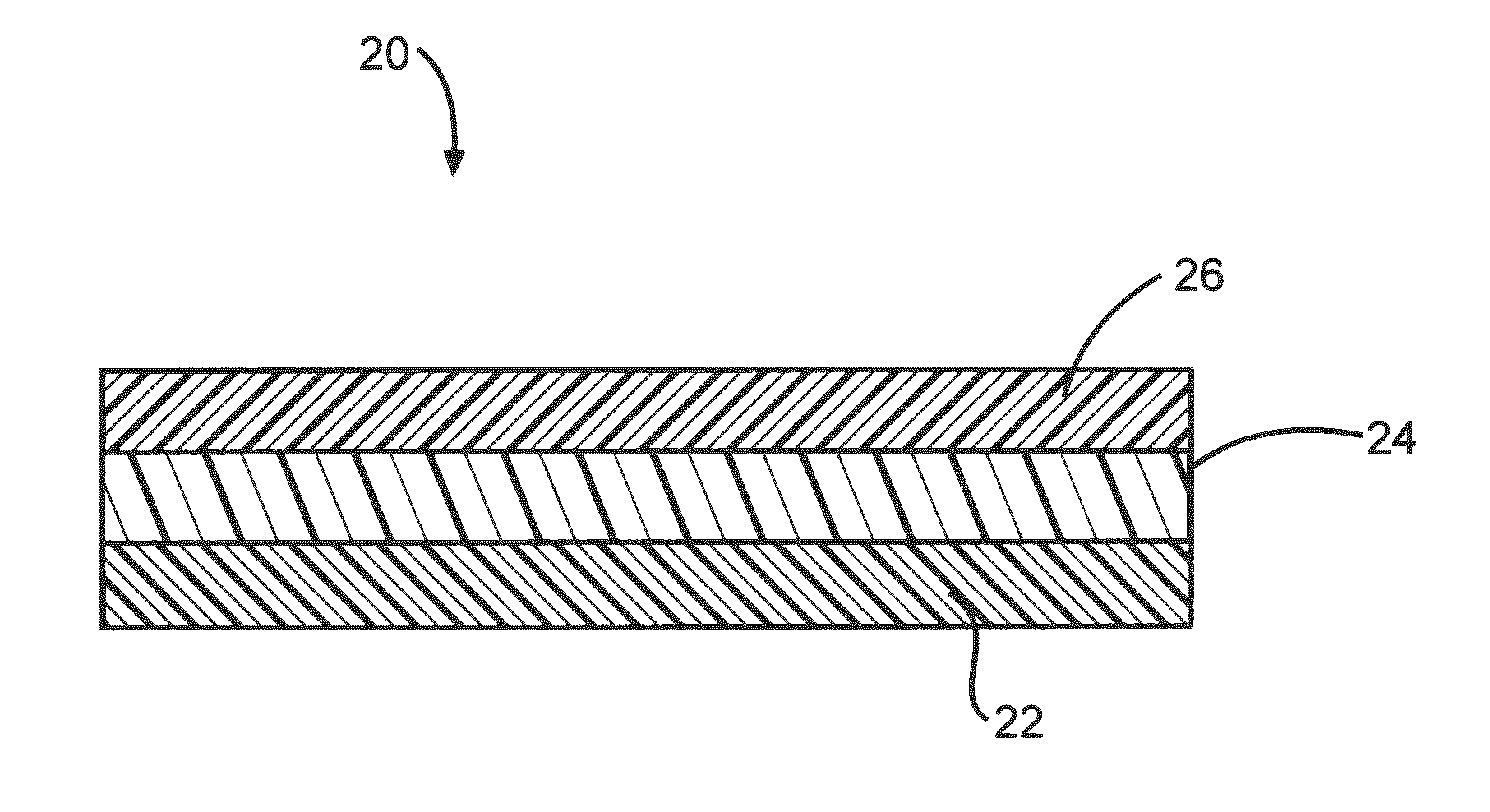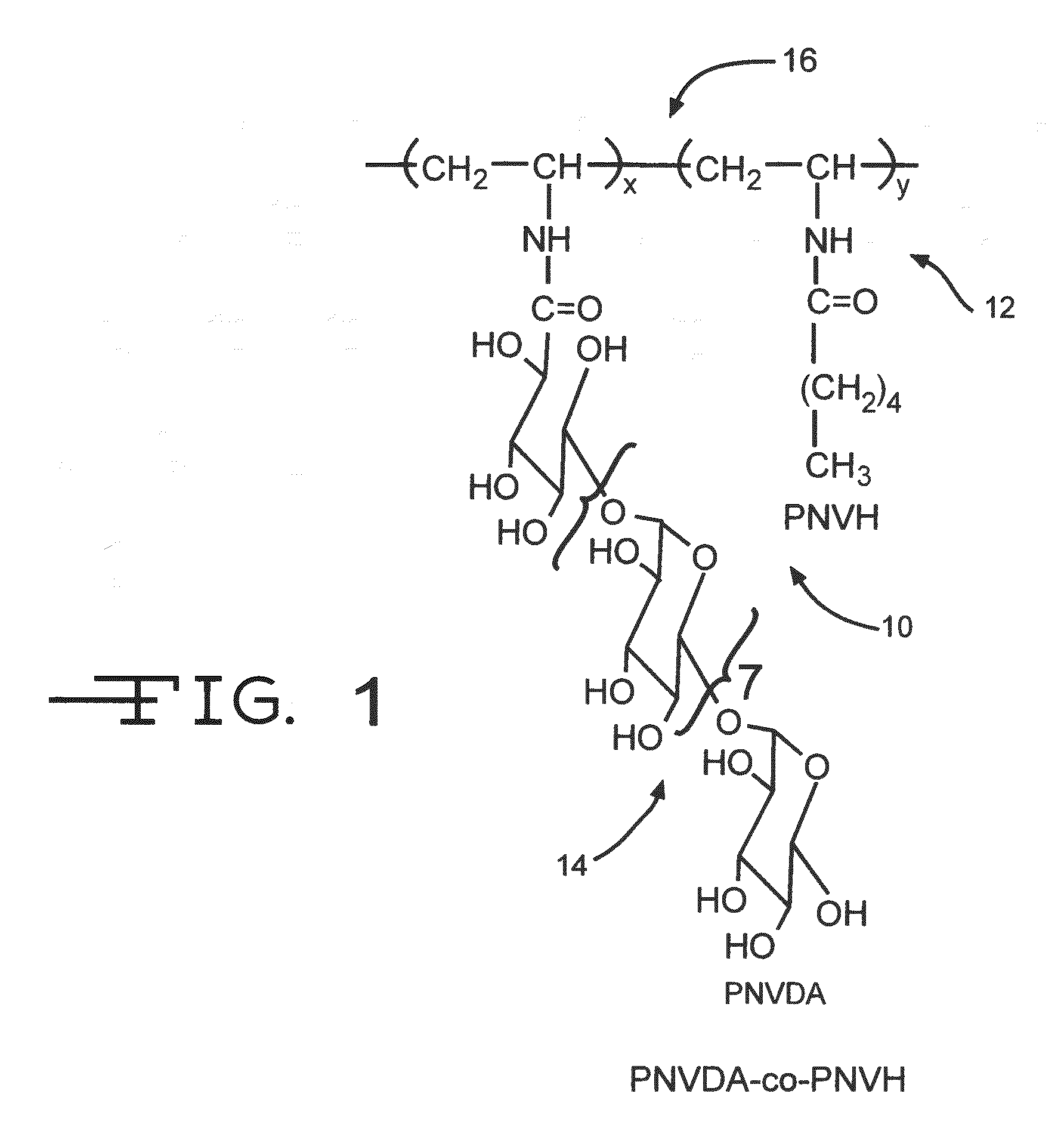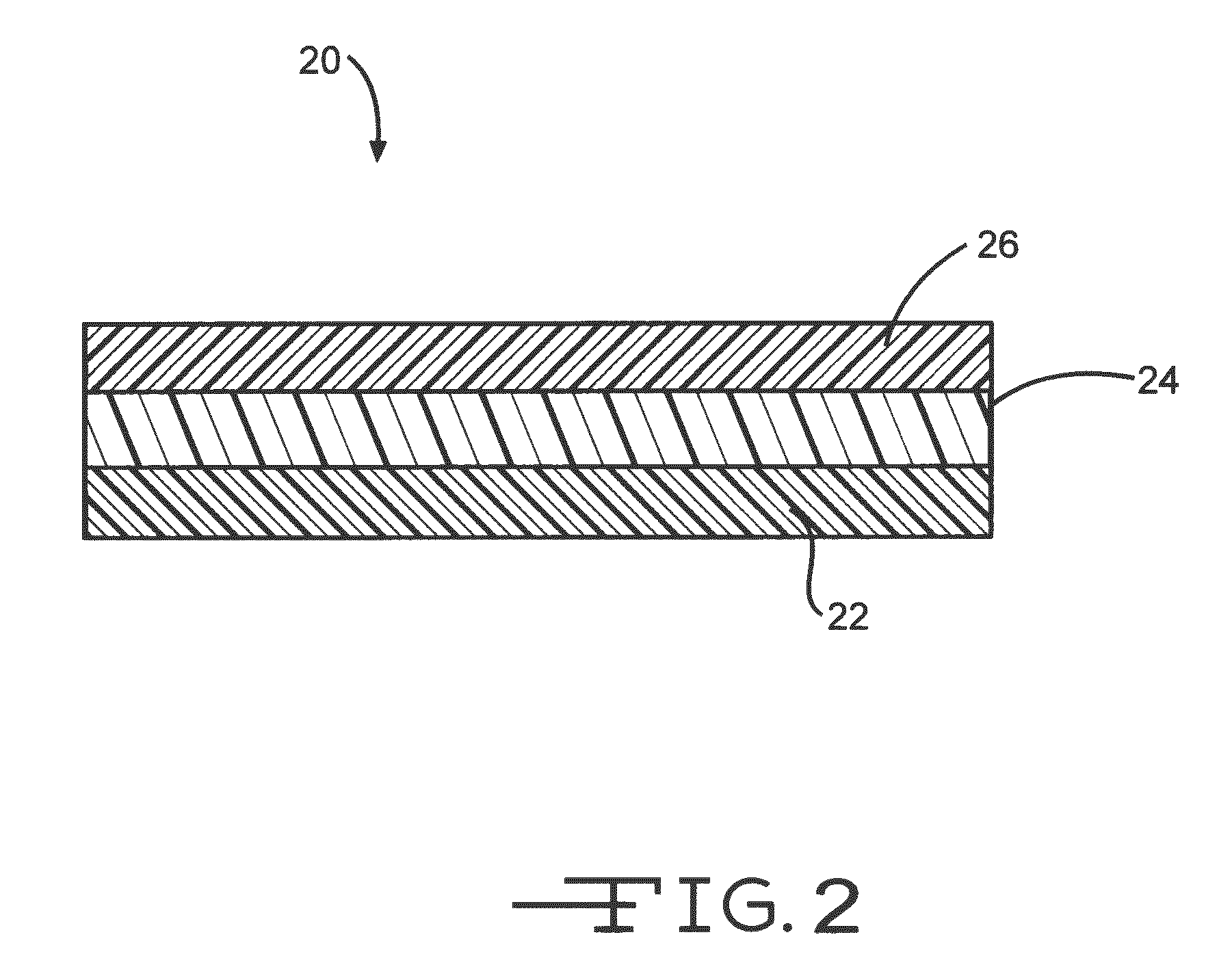Surface modification for coating
a surface modification and coating technology, applied in the field of biocompatible coatings, can solve the problems of obstructing blood flow affecting the stability of the surface, etc., and achieves the effect of increasing the hydrophobicity of the substrate surface and increasing the hydrophobicity
- Summary
- Abstract
- Description
- Claims
- Application Information
AI Technical Summary
Benefits of technology
Problems solved by technology
Method used
Image
Examples
third embodiment
[0041]In the third embodiment, a layer of about 100 nanometers thick is applied to a clean, bare substrate surface. Multiple layers ranging in thickness from about 1 to about 10 micrometers can also be applied. After the solvent mixture is applied to the substrate surface, it is dried in ambient air before the biomimetic surfactant coating is applied.
[0042]In a fourth preferred tie layer method, a polyurethane polycarbonate co-polymer, such as the “Bionate” family of polyurethane polycarbonate polymers manufactured by DSM-PTG, is applied to the substrate surface. The polyurethane polycarbonate copolymer is dissolved in tetrahydrofuran (THF) in a range of about 0.1 to about 10 weight percent polyurethane polycarbonate co-polymer. Alternatively, dimethyacetamide (DMAC) can be used to dissolve the polyurethane polycarbonate co-polymer material.
fourth embodiment
[0043]In the fourth embodiment, a layer about 100 nanometers thick is applied to a clean substrate surface. Multiple layers ranging in thickness from about 1 to about 10 micrometers can also be applied. After the solvent mixture is applied to the substrate surface, it is allowed to dry in ambient air before the biomimetic surfactant coating is applied.
[0044]In addition to the solution processes just described, a hydrophobic tie layer can also be applied to a substrate using any one of the following alternate methods including powder coating, melt extrusion, Langmuir-Blodgett process, gas plasma deposition, chemical vapor deposition, physical deposition process, spray coating, dip coating, or spin coating.
[0045]Although it is preferred that the hydrophobic constituent be dissolved in tetrahydrofuran THF to create a hydrophobic tie layer solution, it is contemplated that other solvents including ethanol, methanol, ethylacetate, dimethylformamide (DMF), dimethyacetamide (DMAC), dimethy...
PUM
| Property | Measurement | Unit |
|---|---|---|
| Percent by mass | aaaaa | aaaaa |
| Percent by mass | aaaaa | aaaaa |
| Thickness | aaaaa | aaaaa |
Abstract
Description
Claims
Application Information
 Login to View More
Login to View More - R&D
- Intellectual Property
- Life Sciences
- Materials
- Tech Scout
- Unparalleled Data Quality
- Higher Quality Content
- 60% Fewer Hallucinations
Browse by: Latest US Patents, China's latest patents, Technical Efficacy Thesaurus, Application Domain, Technology Topic, Popular Technical Reports.
© 2025 PatSnap. All rights reserved.Legal|Privacy policy|Modern Slavery Act Transparency Statement|Sitemap|About US| Contact US: help@patsnap.com



